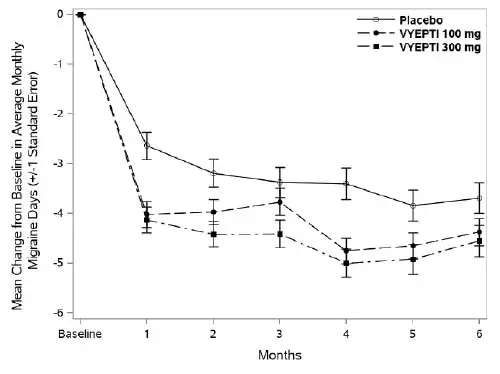Naproxen
The Information On The Site Is Not Medical Advice. We Do Not Sell Anything. The Accuracy Of The Translation Is Not Guaranteed. Disclaimer
What Is Naproxen and How Does It Work?
Naproxen is used as a treatment to relieve pain from various conditions such as headaches muscle aches tendonitis dental pain and menstrual cramps. It also reduces pain swelling and joint stiffness caused by conditions such as arthritis bursitis and gout attacks.
Naproxen belongs to a class of medications called nonsteroidal anti-inflammatory drugs NSAIDs. NSAIDs are a type of medications that work by blocking your body's production of certain natural substances that cause inflammation.
Naproxen is available under the following different brand names: Aleve EC Naprosyn Anaprox Anaprox DS Naprosyn Naprox Sodium Naproxen EC Naproxen SR Naprelan and Menstridol.
What Are the Dosages of Naproxen?
Dosages of Naproxen:
Adult and pediatric:
Tablet
- 220 mg (over the counter)
- 250 mg
- 275 mg
- 375 mg
- 500 mg
- 550 mg
Tablet delayed release
- 375 mg
- 500 mg
Tablet extended-release
- 375 mg
- 500 mg
- 750 mg
Capsule
- 220 mg
Oral Suspension
- 25 mg/ml
Dosage Considerations – Should be Given as Follows:
Adult Dosage Considerations
Pain
- 500 mg orally initially then 250 mg orally every 6-8 hours or 500 mg orally every 12 hours as needed not to exceed 1250 mg/day naproxen base on day 1 subsequent daily doses should not exceed 1000 mg naproxen base.
- Extended-release 750-1000 mg orally every day may temporarily increase to 1500 mg/day if tolerated well and clinically indicated.
Rheumatoid Arthritis Osteoarthritis Ankylosing Spondylitis
- 500-1000 mg/day orally divided every 12 hours may increase to 1500 mg/day if tolerated well for a limited time.
Dysmenorrhea
- 500 mg orally initially then 250 mg orally every 6-8 every hour or 500 mg orally every 12 hours (long-acting formula) not to exceed 1250 mg/day on the first day subsequently does should not exceed 1000 mg/day naproxen base.
Gout Acute
- 750 mg orally initially followed by 250 mg every 8 hours until attach subsides
- Extended-release 1000-1500 mg every day followed by 1000 mg every day until the attack subsides
Migraine (Off-label)
- 750 mg orally initially may give additional 250-500 mg if necessary not to exceed 1250 mg in 24 hours
Pediatric Dosage Considerations
Pain
- Over 2 years
- Cancer pain (off-label): 5-7 mg/kg orally every 8-12 hours not to exceed 1000 mg per day.
- Over 12 years
- 500 mg orally initially then 250 mg orally every 6-8 hours or 500 mg orally every 12 hours as needed not to exceed 1250 mg per day naproxen base on day 1 subsequent daily doses should not exceed 1000 naproxen base.
- Extended-release: 750-1000 mg orally each day; may temporarily increase to 1500 mg/day if tolerated well and clinically indicated
Juvenile Idiopathic Arthritis
- Over 2 years
- 10 mg/kg/day oral suspension orally divided every 12 hours not to exceed 15 mg/kg per day
What Are Side Effects Associated with Using Naproxen?
Common side effects include:
- abdominal pain
- constipation
- dizziness
- drowsiness
- headache
- heartburn
- nausea
- swelling
- abdominal bleeding
- abdominal perforation
- lightheadedness
- abdominal ulcers
- fluid retention
- diarrhea
- inflammation of the mucous membrane of the mouth
- diverticulitis
- difficulty breathing
- hearing disturbances
- elevation of serum alanine aminotransferase or aspartate aminotransferase
This document does not contain all possible side effects and others may occur. Check with your doctor or other medical professional for additional information about side effects or other concerns about conditions related to your health.
What Other Drugs Interact with Naproxen?
If your doctor has directed you to use this NSAID your medical doctor or pharmacist may already be aware of any possible drug interactions and may be monitoring you for them. Do not start stop or change the dosage of any medicine before checking with your doctor health care provider or pharmacist first for more health information.
Naproxen has no known severe interactions with any drugs.
Serious Interactions of Naproxen include:
- benazepril
- captopril
- enalapril
- fosinopril
- ketorolac
- ketorolac intranasal
- lisinopril
- methotrexate
- moexipril
- pemetrexed
- perindopril
- quinapril
- ramipril
- tacrolimus
- trandolapril
Naproxen has moderate interactions with at least 229 different drugs.
Naproxen has mild interactions with at least 80 different drugs.
This information does not contain all possible interactions. Therefore before using this drug tell your doctor or pharmacist of all the medications you use. Keep a list of all your medications with you and share the list with your doctor and pharmacist. Check with your physician if you have health questions concerns or more health information.
What Are Warnings and Precautions for Naproxen?
Warnings
Cardiovascular risk
- Nonsteroidal anti-inflammatory drugs may increase risk of serious cardiovascular thrombotic events myocardial infarction and stroke which can be fatal.
- Risk may increase with duration of use.
- Patients with existing cardiovascular disease or risk factors for such disease may be at greater risk.
- Nonsteroidal anti-inflammatory drugs are contraindicated for perioperative pain in setting of coronary artery bypass graft surgery
Gastrointestinal risk
- Nonsteroidal anti-inflammatory drugs increase risk of serious gastrointestinal adverse events including bleeding ulceration and gastric or intestinal perforation which can be fatal
- Gastrointestinal adverse events may occur at any time during use and without warning symptoms
- Elderly patients are at greater risk for serious gastrointestinal events
This medication contains naproxen. Do not take Aleve EC Naprosyn Anaprox Anaprox DS Naprosyn Naprox Sodium Naproxen EC Naproxen SR Naprelan or Menstridol if you are allergic to naproxen or any ingredients contained in this drug.
Keep out of reach of children. In case of overdose get medical help or contact a Poison Control Center immediately.
Contraindications
- Hypersensitivity to naproxen or other H2-receptor antagonists.
Contraindications
- Absolute: Aspirin allergy ; perioperative pain in setting of coronary artery bypass graft surgery.
- Relative: Bleeding disorders delayed esophageal transit hepatic disease peptic ulcer renal impairment stomatitis late pregnancy (may cause premature closure of ductus arteriosus).
Effects of Drug Abuse
- None
Short-Term Effects
- May cause drowsiness dizziness and blurred vision
- See 'What Are Side Effects Associated with Using Naproxen?
Long-Term Effects
- Prolonged use may increase the risk of adverse cardiovascular events
- Long-term administration of nonsteroidal anti-inflammatory drugs may result in renal papillary necrosis and other renal injury; patients at greatest risk include elderly individuals those with impaired renal function decreased volume of blood in the body heart failure liver dysfunction or salt depletion and those taking diuretics angiotensin-converting enzyme inhibitors or angiotensin-receptor blockers
- See 'What Are Side Effects Associated with Using Naproxen?
Cautions
- Use caution in congestive heart failure high blood pressure kidney/liver impairment or aspirin-sensitive asthma
- May increase risk of aseptic meningitis especially in patients with systemic lupus erythematosis and mixed connective tissue disorders
- Prolonged use may increase risk of adverse cardiovascular events
- May cause systemic allergic reactions even in patients with no prior exposure to nonsteroidal anti-inflammatory drugs
- Long-term administration of nonsteroidal anti-inflammatory drugs may result in renal papillary necrosis and other renal injury; patients at greatest risk include elderly individuals those with impaired renal function decreased volume of blood in the body heart failure liver dysfunction or salt depletion and those taking diuretics angiotensin-converting enzyme inhibitors or angiotensin-receptor blockers
- May cause drowsiness dizziness and blurred vision
- Platelet aggregation and adhesion may be decreased; may prolong bleeding time; monitor closely patients with coagulation disorders
- May increase risk of elevated potassium levels in the blood in the elderly renal disease or diabetics especially when used together with drugs that increase elevated potassium levels in the blood
- May cause serious skin reactions including exfoliative dermatitis toxic epidermal syndrome Stevens-Johnson syndrome and toxic epidermal necrolysis; discontinue therapy at first sign of skin rash
- May cause new-onset of hypertension; monitor blood pressure closely throughout therapy
- Over-the-counter (OTC) use not for children under 12 years of age
- Withhold for at least 4-6 half-lives prior to surgery or dental procedure
- Heart failure risk
- Nonsteroidal anti-inflammatory drugs have the potential to trigger heart failure by prostaglandin inhibition that leads to sodium and water retention increased systemic vascular resistance and blunted response to diuretics
- Nonsteroidal anti-inflammatory drugs should be avoided or withdrawn whenever possible
Pregnancy and Lactation
- Use naproxen with caution for short-term use if the benefits outweigh risks
- Animal studies show risk and human studies are not yet available or neither animal nor human studies are done
- Do not use naproxen for prolonged periods or after 31-32 weeks of gestation
- Only use naproxen in LIFE-THREATING emergencies when no safer drug is available
- There is positive evidence of human fetal risk
- Quebec Pregnancy Registry identified 4705 women who had spontaneous abortions by 20 weeks' gestation; each case was matched to 10 control subjects (n=47050) who had not had spontaneous abortions; exposure to non-aspirin nonsteroidal anti-inflammatory drug during pregnancy was documented in approximately 7.5% of cases of spontaneous abortions and approximately 2.6% of controls
- Naproxen is excreted in breast milk; its effect on infants is unknown. Naproxen is not recommended if lactating.
Medscape. Naproxen.
https://reference.medscape.com/drug/aleve-anaprox-naproxen-343296#0












